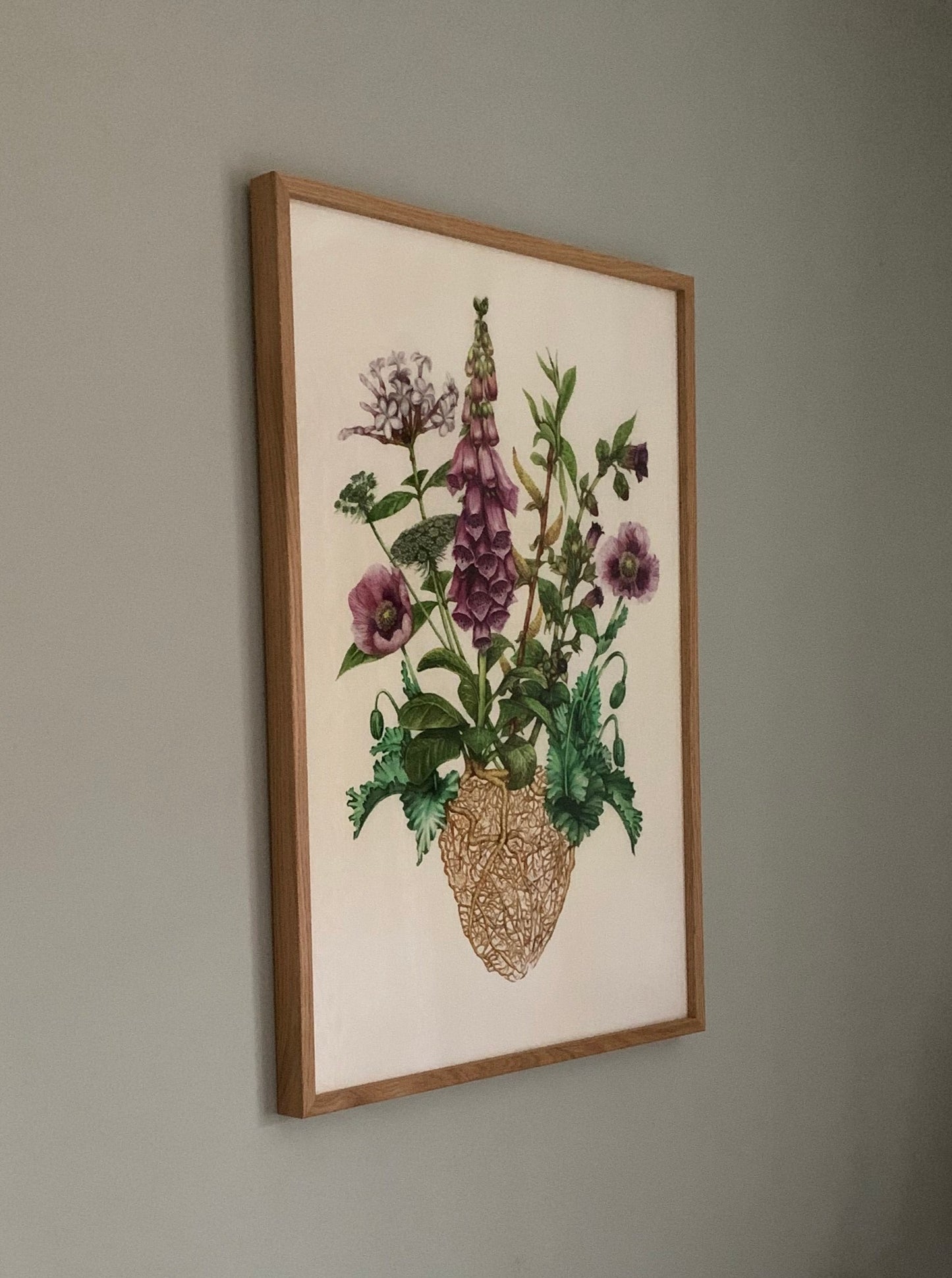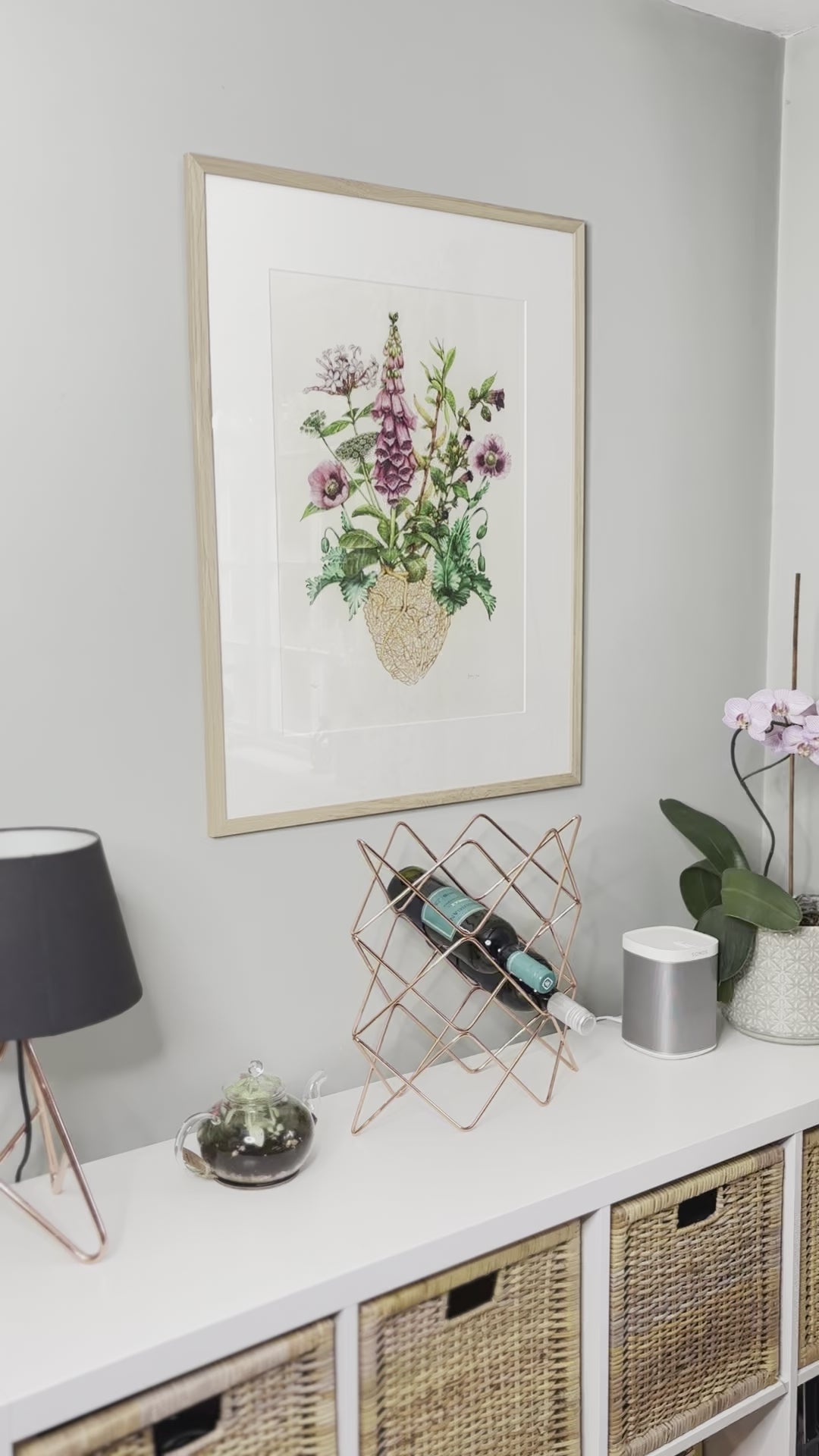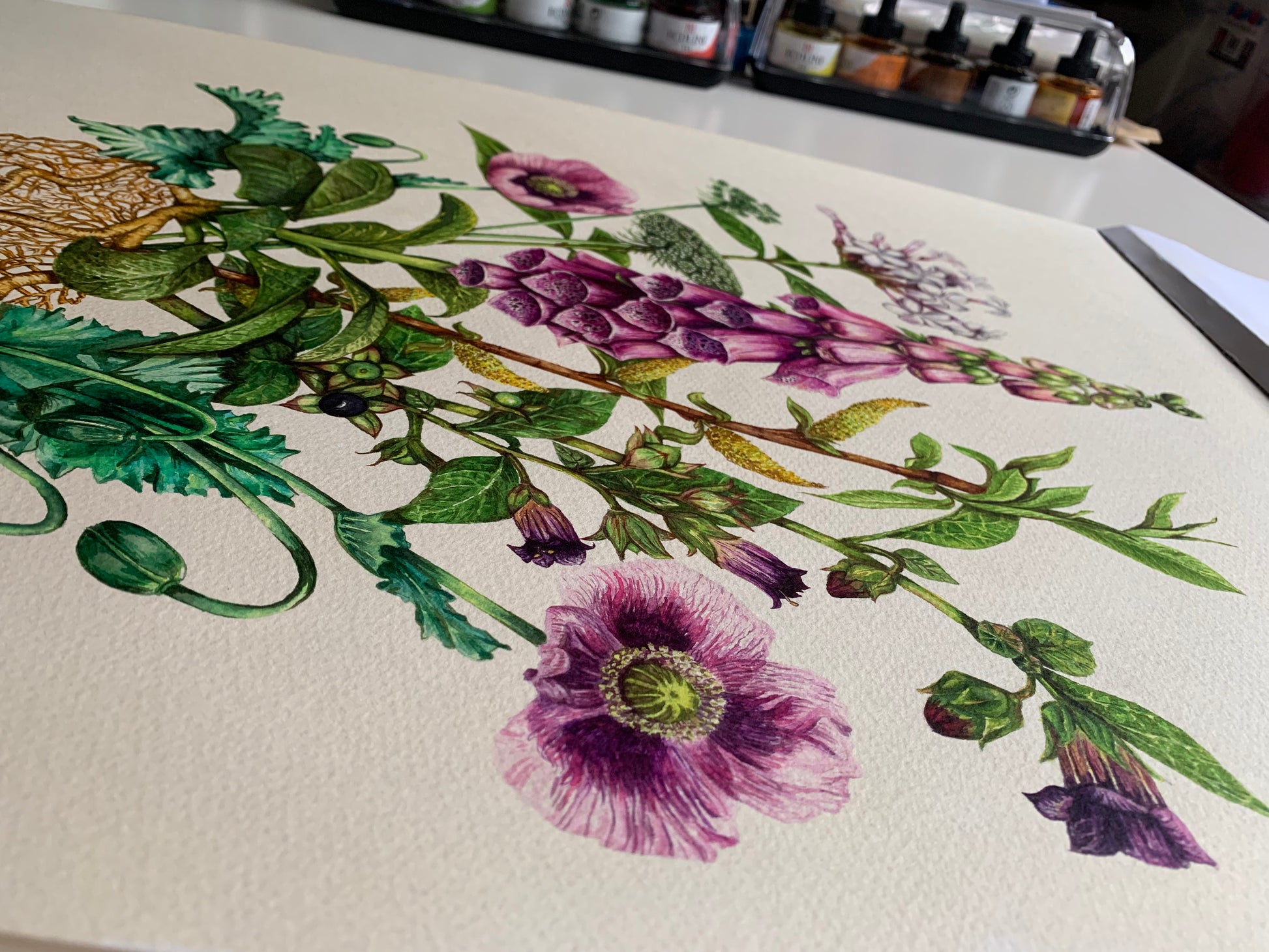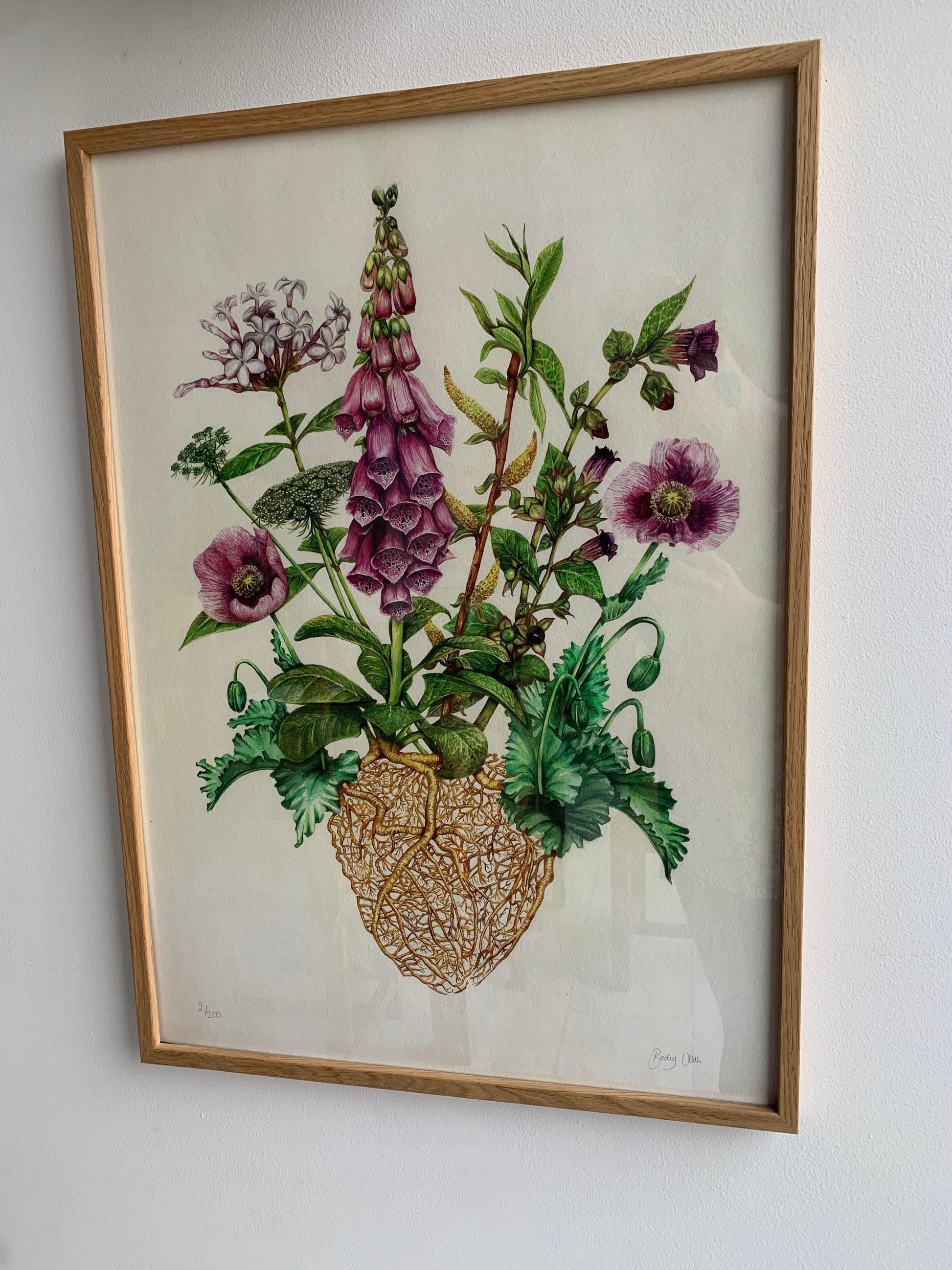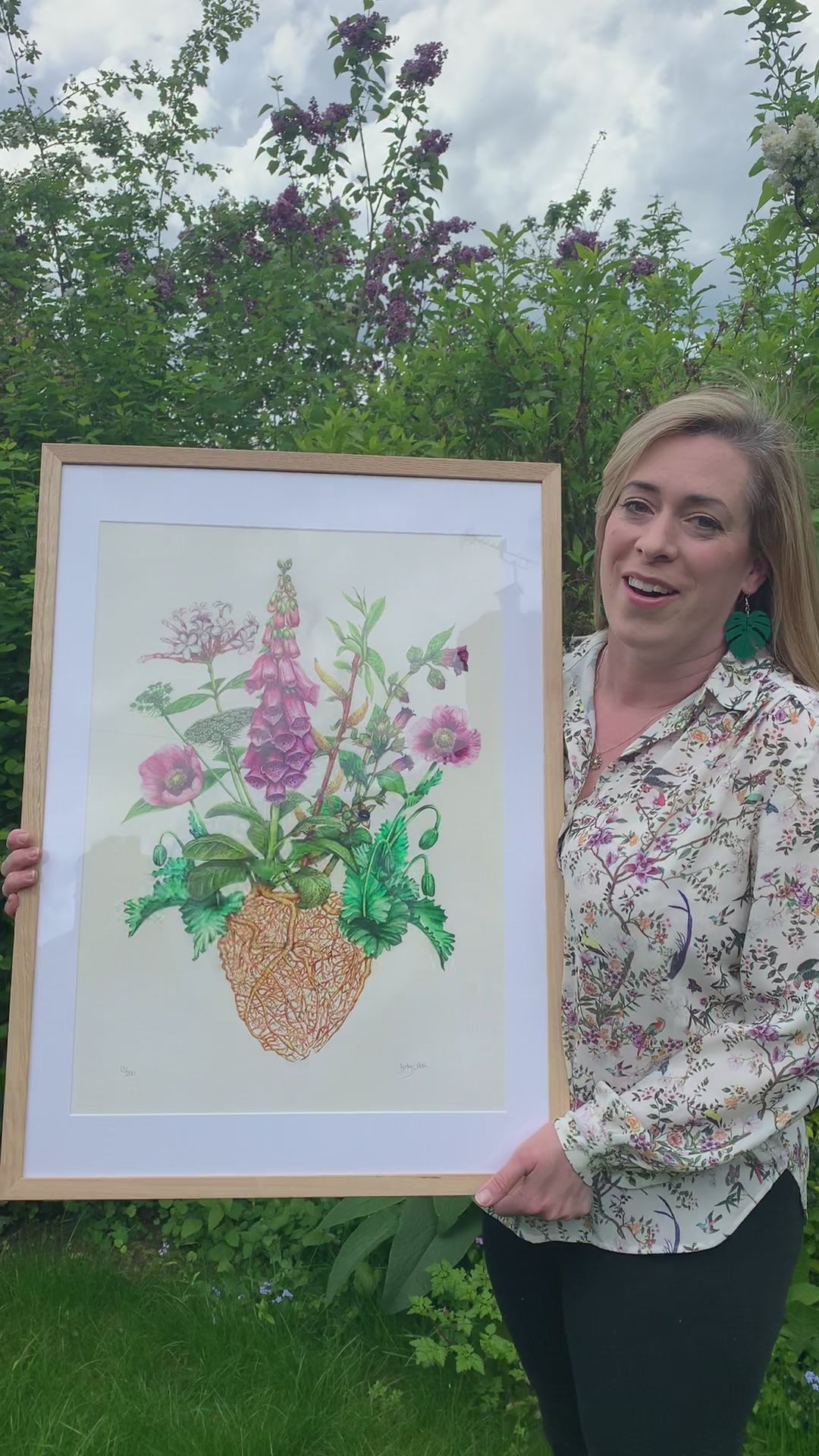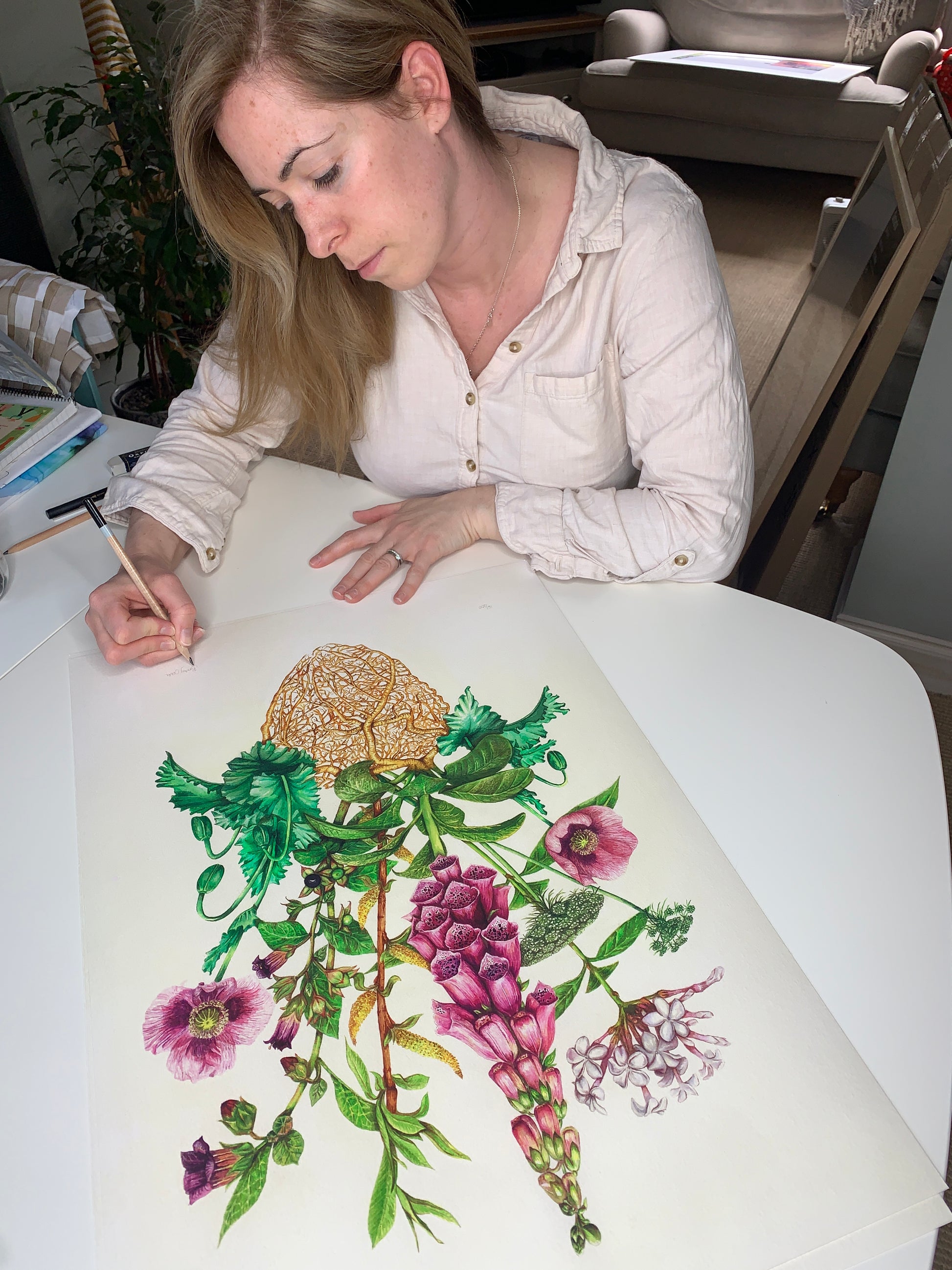The Medicinal Heart Limited Edition Print A2
The Medicinal Heart Limited Edition Print A2
This exquisite piece of botanical art has a deeper story with the roots amassing into a network of anatomically accurate coronary arteries. The plants erupting from this meshwork all have origins for modern prescription cardiac medications (explained from left to right):
Papaver somniferum - Poppies are the source of morphine, codeine and papaverine. A synthetic analogue of papaverine is verapamil, an important treatment for angina, high blood pressure and cardiac arrhythmias.
Visnaga daucoides - The toothpick plant has been used medicinally for centuries for a variety of disorders. It is the source of amiodarone, an important anti-arrhythmic drug.
Rauvolfia Serpentina - An extract from the roots is the source of a blood pressure medication called reserpine.
Digitalis purpurea - Foxgloves are known for being the source of digoxin, which was widely used to treat atrial fibrillation.
Salix alba - The bark of willow contains salicylic acid, which is acetylated to form aspirin, used to prevent recurrent heart disease.
Atropa belladonna - This plant produces a drug called atropine, used to speed up a slow pulse.
Hand signed, giclée print on 310 gsm Museum Heritage acid-free paper, meeting the highest museum quality archival standards.
Size is A2 (420 x 594mm or 16.5 x 23.4 inches).
This is a limited edition with only 200 available. If you would like this framed please e-mail me to organise.
Shipping is usually within 1 week and sent next day special delivery, tracked and signed for. The art is carefully packed in a solid cardboard tube and wrapped in glassine acid-free paper.
If you would like this item framed in an oak veneer, glass-fronted frame with a custom made mount (see photo and video of me holding an example), then please select this option at checkout for an additional £85. Please allow additional time for dispatch as the frames are ordered as required.
COLLECTION - if you are local to Hitchin and would prefer to collect, please send me a direct message.
Care Advice
Please keep the print out of direct sunlight and frame under acrylic or glass protection to avoid deterioration in pigments.
Please make sure your hands are clean and remove the print carefully from the packaging.
Couldn't load pickup availability








